Efficacy of neutral electrolyzed water vs. common topical antiseptics in the healing of full‑thickness burn: Preclinical trial in a mouse model
- Authors:
- Ivan Delgado‑Enciso
- Nomely S. Aurelien‑Cabezas
- Carmen Meza‑Robles
- Mireya Walle‑Guillen
- Gustavo A. Hernandez‑Fuentes
- Ariana Cabrera‑Licona
- Alejandra E. Hernandez‑Rangel
- Marina Delgado‑Machuca
- Alejandrina Rodriguez‑Hernandez
- Oscar F. Beas‑Guzman
- Citlaly B. Cardenas‑Aguilar
- Iram P. Rodriguez‑Sanchez
- Margarita L. Martinez‑Fierro
- Daniel Chaviano‑Conesa
- Brenda A. Paz‑Michel
-
Affiliations: Department of Molecular Medicine, School of Medicine, University of Colima, Colima 28040, Mexico, Department of Research, State Cancerology Institute of Colima, Health Services of The Mexican Social Security Institute for Welfare (IMSS‑BIENESTAR Colima), Colima 28085, Mexico, Department of Research, Esteripharma SA de CV, Atlacomulco 50450, Mexico, Molecular and Structural Physiology Laboratory, School of Biological Sciences, Autonomous University of Nuevo León, San Nicolás de los Garza 66455, Mexico, Molecular Medicine Laboratory, Academic Unit of Human Medicine and Health Sciences, Autonomous University of Zacatecas, Zacatecas 98160, México - Published online on: October 10, 2024 https://doi.org/10.3892/br.2024.1877
- Article Number: 189
-
Copyright: © Delgado‑Enciso et al. This is an open access article distributed under the terms of Creative Commons Attribution License.
This article is mentioned in:
Abstract
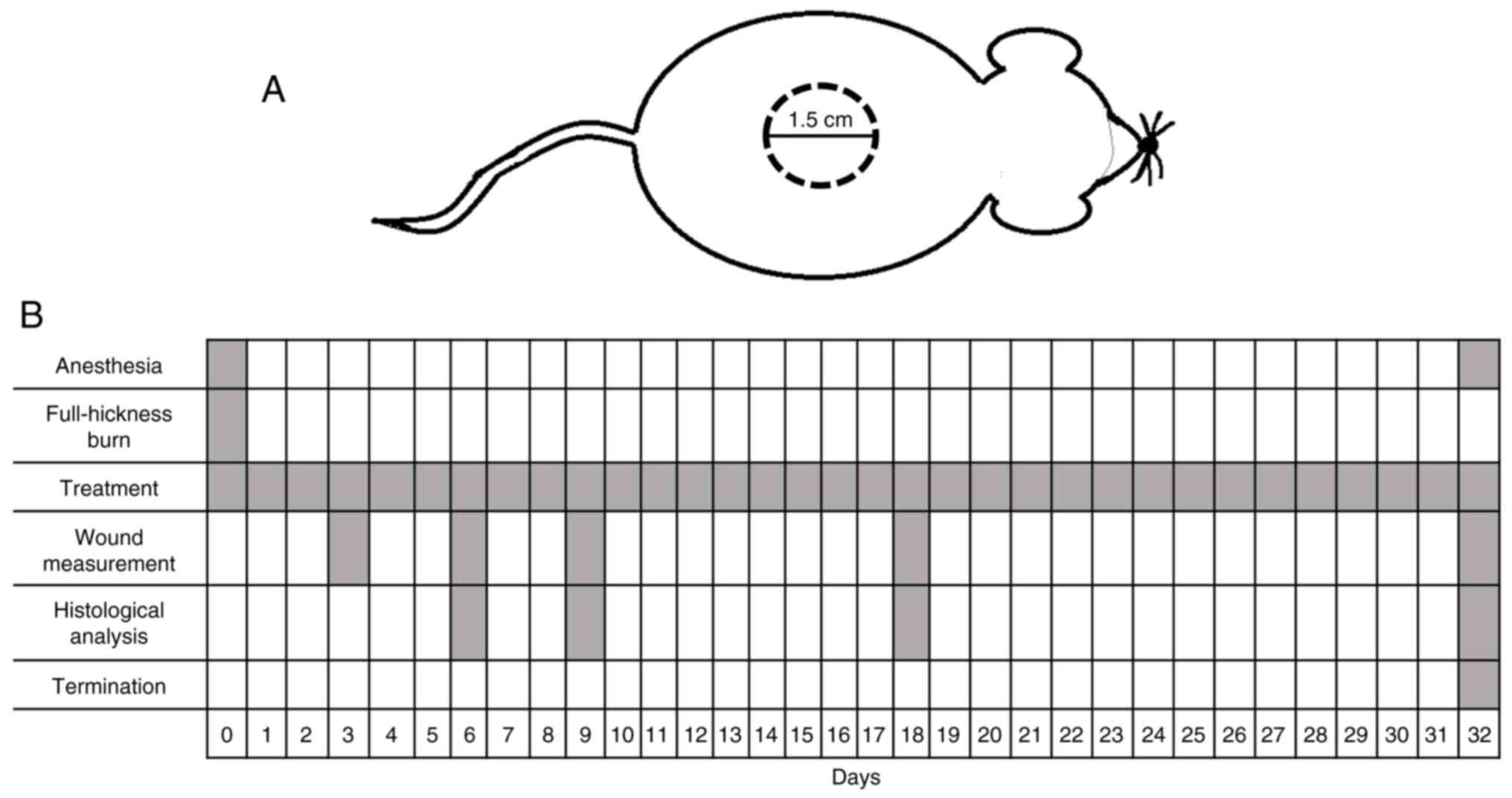 |
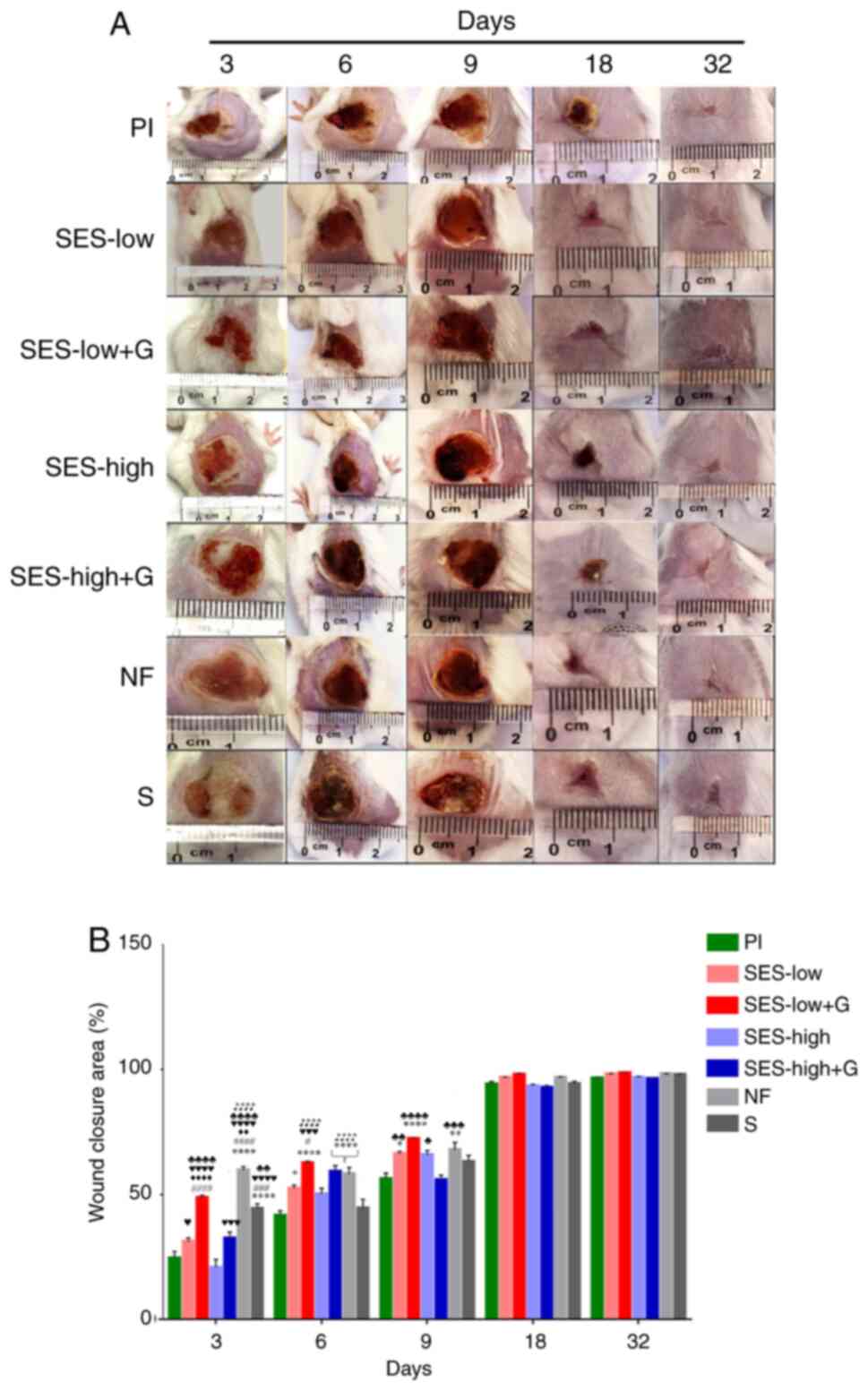 |
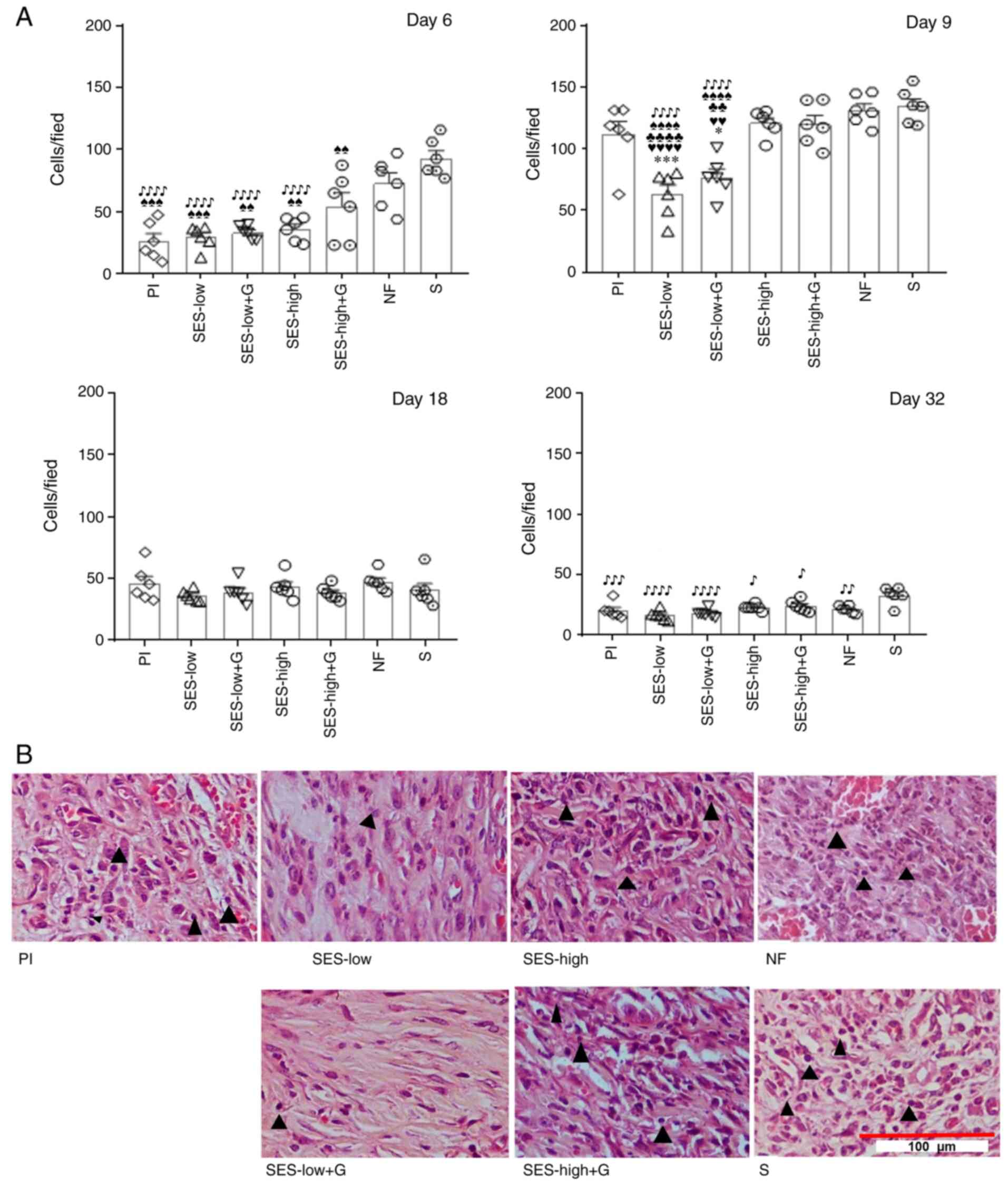 |
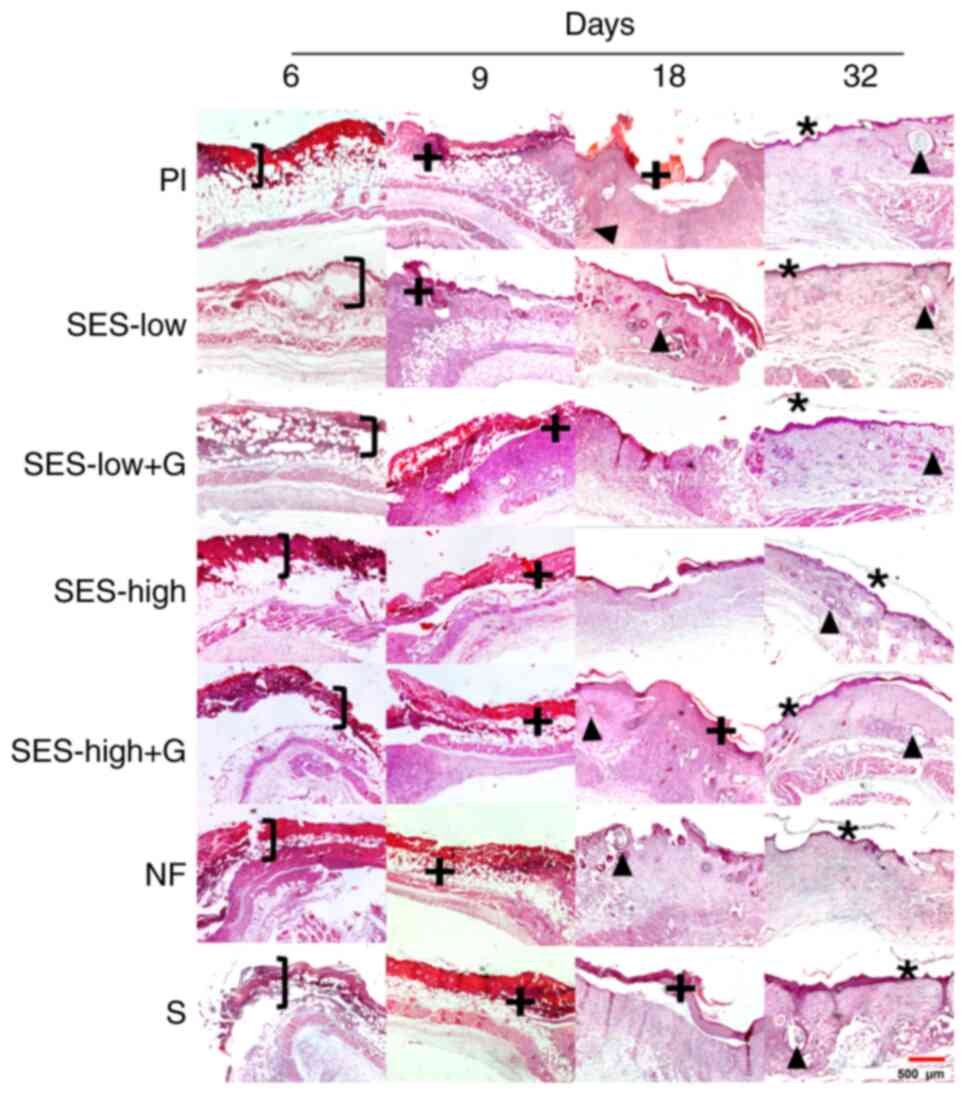 |
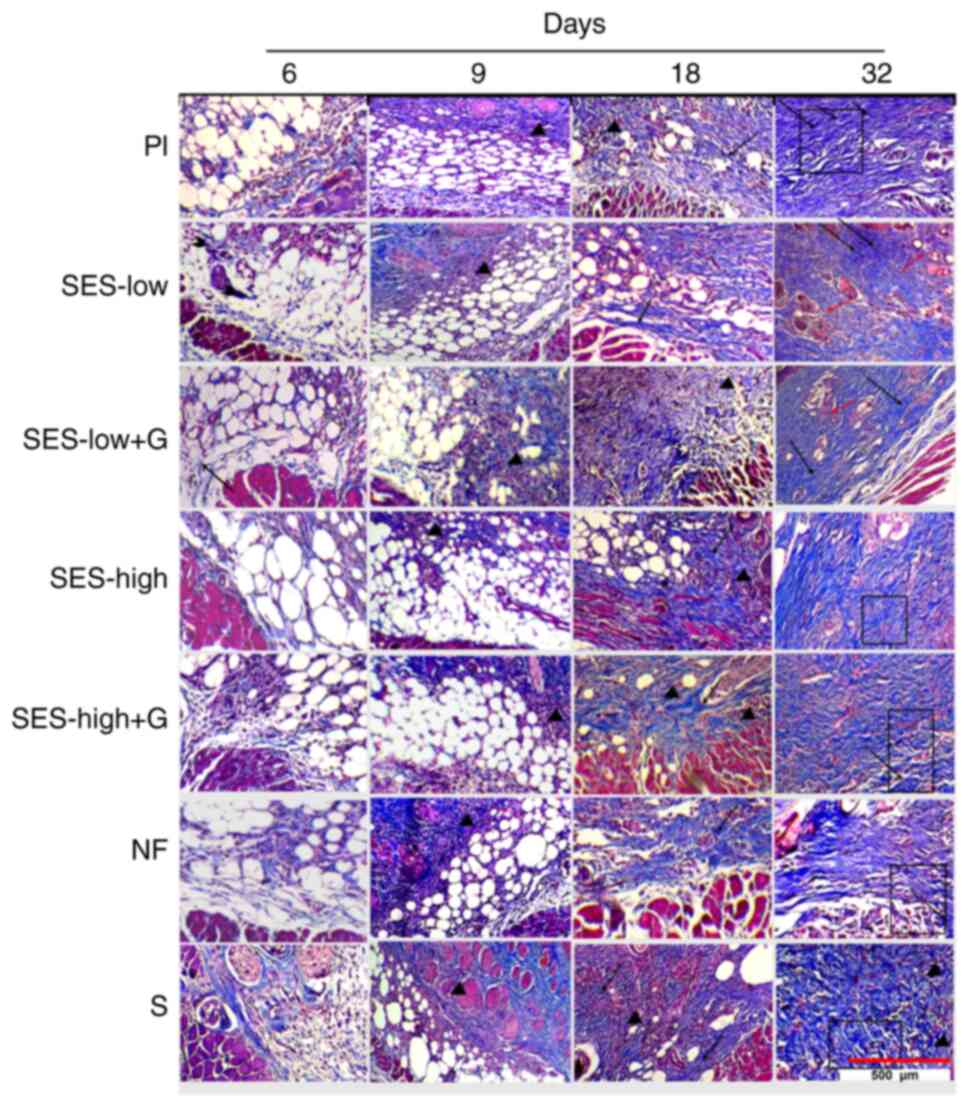 |
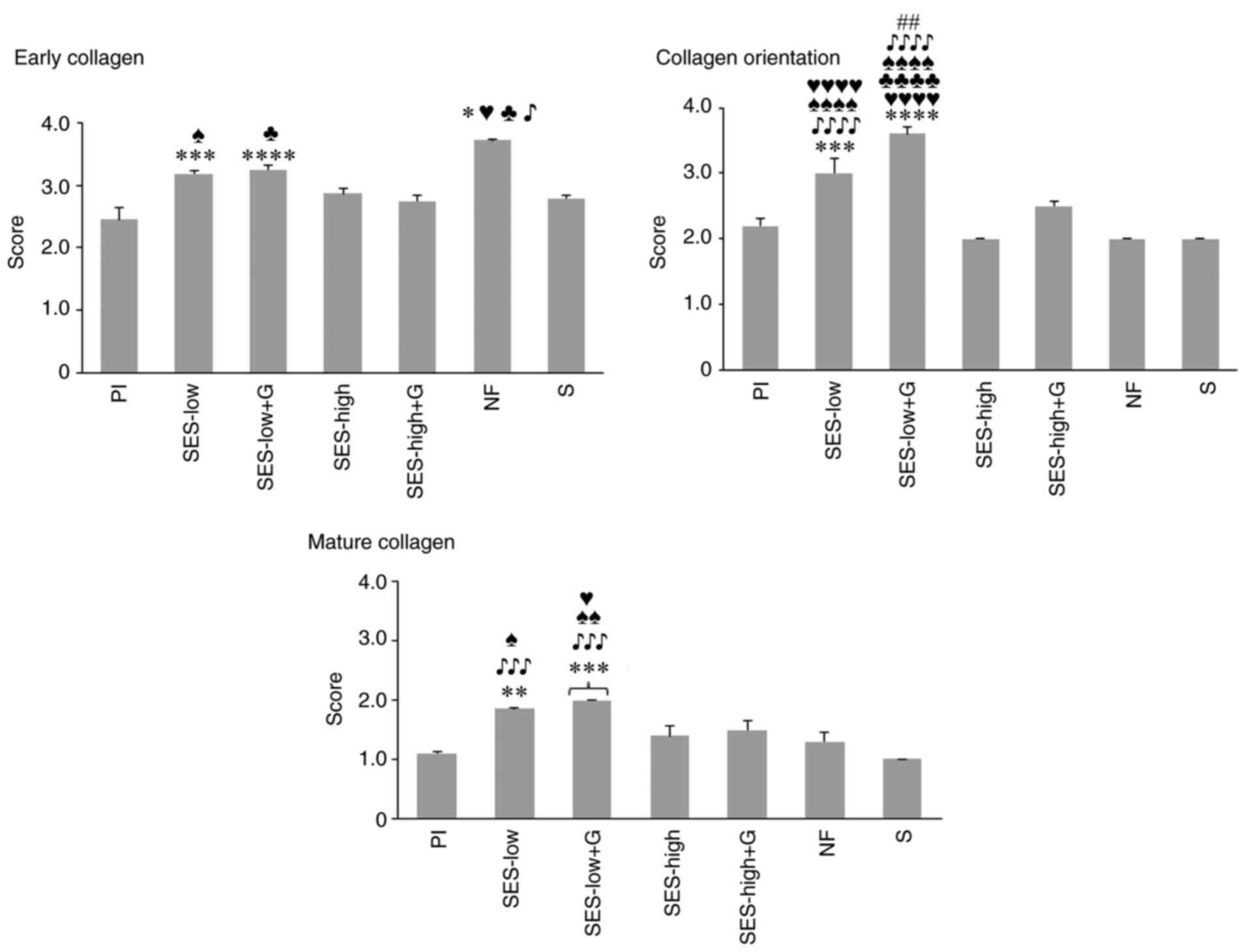 |
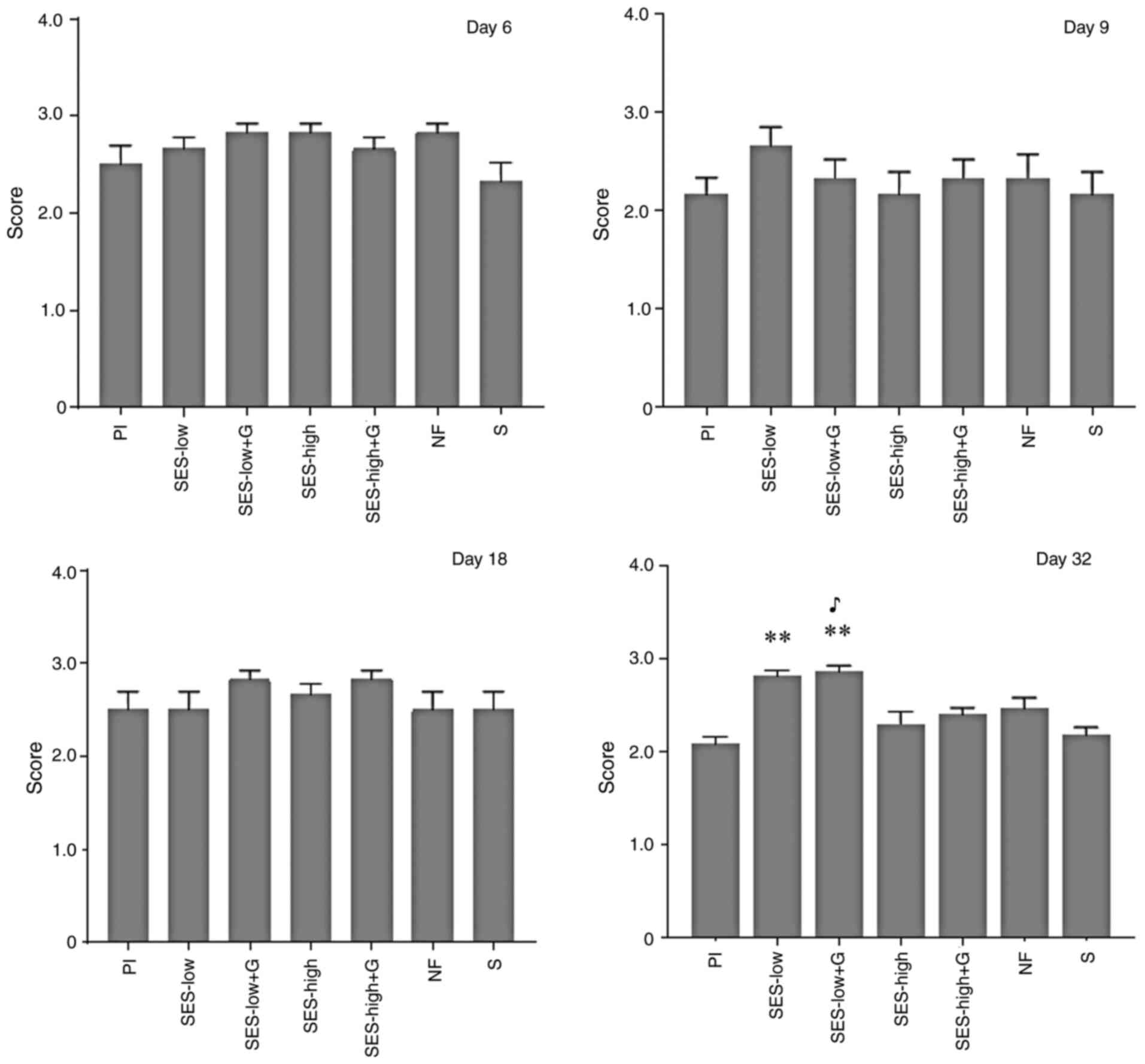 |
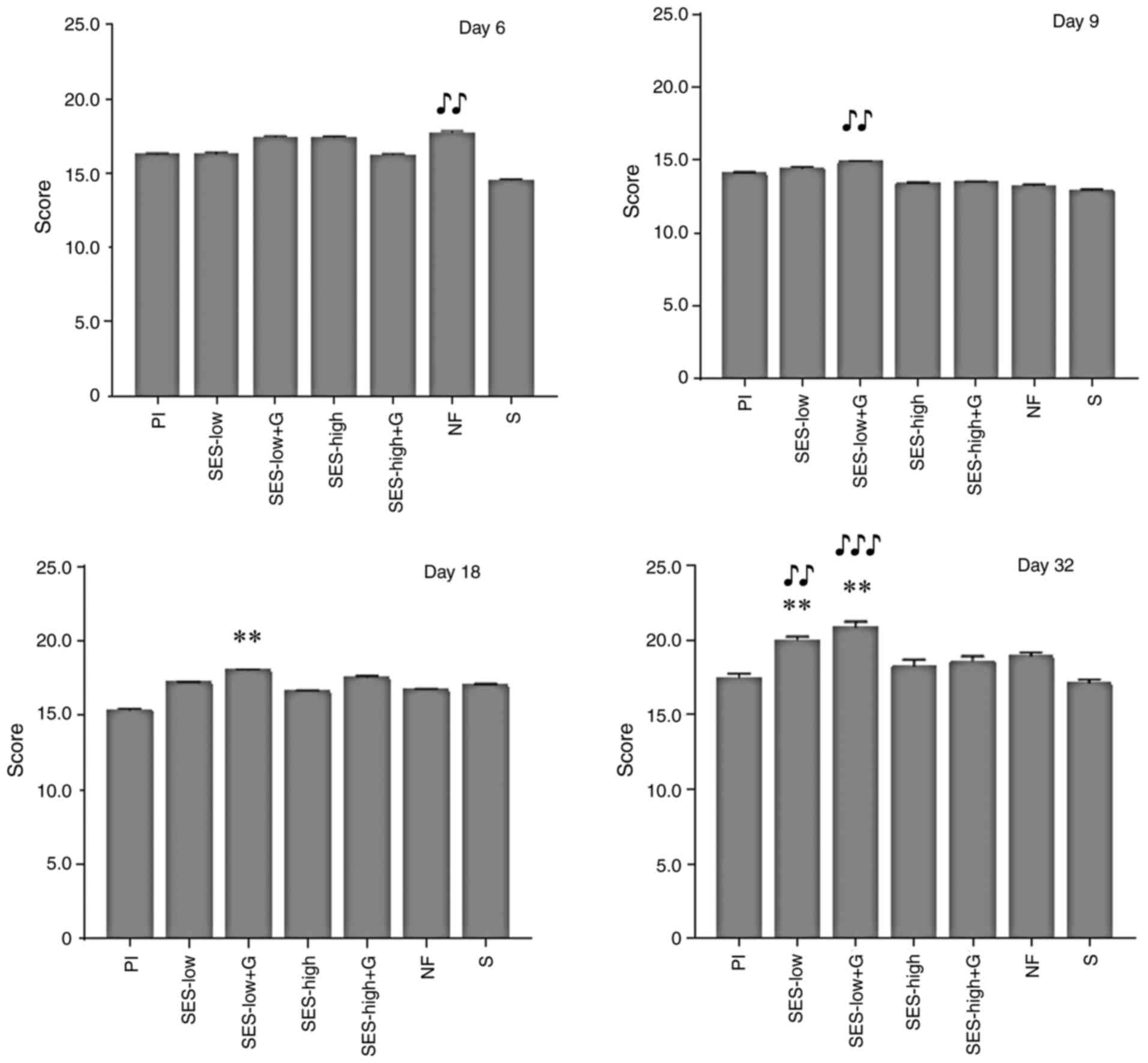 |
|
Summer GJ, Puntillo KA, Miaskowski C, Green PG and Levine JD: Burn injury pain: The continuing challenge. J Pain. 8:533–548. 2007.PubMed/NCBI View Article : Google Scholar | |
|
Warby R and Maani CV: Burn classification. StatPearls [Internet]. Treasure Island (FL): StatPearls Publishing, 2024. | |
|
Stiles K: Emergency management of burns: Part 2. Emerg Nurse. 26:36–41. 2018.PubMed/NCBI | |
|
Eyvaz K, Kement M, Balin S, Acar H, Kündeş F, Karaoz A, Civil O, Eser M, Kaptanoglu L, Vural S and Bildik N: Clinical evaluation of negative-pressure wound therapy in the management of electrical burns. Turk J Trauma Emerg Surg. 24:456–461. 2018.PubMed/NCBI View Article : Google Scholar | |
|
Wu YT, Chen KH, Ban SL, Tung KY and Chen LR: Evaluation of leap motion control for hand rehabilitation in burn patients: An experience in the dust explosion disaster in Formosa Fun Coast. Burns. 45:157–164. 2019.PubMed/NCBI View Article : Google Scholar | |
|
Markiewicz-Gospodarek A, Kozioł M, Tobiasz M, Baj J, Radzikowska-Büchner E and Przekora A: Burn wound healing: Clinical complications, medical care, treatment, and dressing types: The current state of knowledge for clinical practice. Int J Environ Res Public Health. 19(1338)2022.PubMed/NCBI View Article : Google Scholar | |
|
James SL, Lucchesi LR, Bisignano C, Castle CD, Dingels ZV, Fox JT, Hamilton EB, Henry NJ, McCracken D, Roberts NLS, et al: Epidemiology of injuries from fire, heat and hot substances: Global, regional and national morbidity and mortality estimates from the global burden of disease 2017 study. Inj Prev. 26 (Supp 1):i36–i45. 2020.PubMed/NCBI View Article : Google Scholar | |
|
Abarca L, Guilabert P, Martin N, Usúa G, Barret JP and Colomina MJ: Epidemiology and mortality in patients hospitalized for burns in Catalonia, Spain. Sci Rep. 13(14364)2023.PubMed/NCBI View Article : Google Scholar | |
|
Yakupu A, Zhang J, Dong W, Song F, Dong J and Lu S: The epidemiological characteristic and trends of burns globally. BMC Public Health. 22(1596)2022.PubMed/NCBI View Article : Google Scholar | |
|
Giummarra MJ, Casey SL, Devlin A, Ioannou LJ, Gibson SJ, Georgiou-Karistianis N, Jennings PA, Cameron PA and Ponsford J: Co-occurrence of posttraumatic stress symptoms, pain, and disability 12 months after traumatic injury. Pain Rep. 2(e622)2017.PubMed/NCBI View Article : Google Scholar | |
|
Tiwari VK: Burn wound: How it differs from other wounds? Indian J Plast Surg. 45:364–373. 2012.PubMed/NCBI View Article : Google Scholar | |
|
Hoang DM, Pham PT, Bach TQ, Ngo ATL, Nguyen QT, Phan TTK, Nguyen GH, Le PTT, Hoang VT, Forsyth NR, et al: Stem cell-based therapy for human diseases. Signal Transduct Target Ther. 7(272)2022.PubMed/NCBI View Article : Google Scholar | |
|
Shu DY, Hutcheon AEK, Zieske JD and Guo X: Epidermal growth factor stimulates transforming growth factor-beta receptor type II expression in corneal epithelial cells. Sci Rep. 9(8079)2019.PubMed/NCBI View Article : Google Scholar | |
|
Rothe MJ and Falanga V: Growth factors and wound healing. Clin Dermatol. 9:553–559. 1991.PubMed/NCBI View Article : Google Scholar | |
|
Negut I, Grumezescu V and Grumezescu A: Treatment strategies for infected wounds. Molecules. 23(2392)2018.PubMed/NCBI View Article : Google Scholar | |
|
Norman G, Christie J, Liu Z, Westby MJ, Jefferies JM, Hudson T, Edwards J, Mohapatra DP, Hassan IA and Dumville JC: Antiseptics for burns. Cochrane Database Syst Rev. 7(CD011821)2017.PubMed/NCBI View Article : Google Scholar | |
|
Lagziel T, Asif M, Born L, Quiroga LH, Duraes E, Slavin B, Shetty P, Caffrey J and Hultman CS: Evaluating the efficacy, safety, and tolerance of silver sulfadiazine dressings once daily versus twice daily in the treatment of burn wounds. J Burn Care Res. 42:1136–1139. 2021.PubMed/NCBI View Article : Google Scholar | |
|
Kazemzadeh J, Yousefiazar A and Zahedi A: Amniotic membrane dressing versus nitrofurazone-impregnated dressing in the treatment of second-degree burn wounds: A randomized clinical trial. Wounds. 34:11–16. 2021.PubMed/NCBI View Article : Google Scholar | |
|
Webber CE, Glanges E and Crenshaw CA: Treatment of second degree burns: Nitrofurazone, povidone-iodine, and silver sulfadiazine. JACEP. 6:486–490. 1977.PubMed/NCBI View Article : Google Scholar | |
|
Yamakawa S and Hayashida K: Advances in surgical applications of growth factors for wound healing. Burns Trauma. 7(10)2019.PubMed/NCBI View Article : Google Scholar | |
|
Toral-Freyre SDC, Castillejos-López M, Hernández A, Becerril-Vargas E, Mújica-Sánchez MA, Mendoza-Romero VM, Casino-Ríos A, González-Mancera G, Cabrera-Licona A and Mervitch-Sigal N: Uso de una solución electrolizada de superoxidación para desinfectar mascarillas de ventilación mecánica no invasiva. Neumol Cir Torax. 81:224–231. 2022.(In Spanish). | |
|
Cárdenas AM, Campos-Bijit V, Di Francesco F, Schwarz F, Cafferata EA and Vernal R: Electrolyzed water for the microbiologic control in the pandemic dental setting: A systematic review. BMC Oral Health. 22(579)2022.PubMed/NCBI View Article : Google Scholar | |
|
Yan P, Daliri EBM and Oh DH: New clinical applications of electrolyzed water: A review. Microorganisms. 9(136)2021.PubMed/NCBI View Article : Google Scholar | |
|
Delgado-Enciso I, Paz-Garcia J, Barajas-Saucedo C, Mokay-Ramírez KA, Meza-Robles C, Lopez-Flores R, Delgado-Machuca M, Murillo-Zamora E, Toscano-Velazquez JA, Delgado-Enciso J, et al: Safety and efficacy of a COVID-19 treatment with nebulized and/or intravenous neutral electrolyzed saline combined with usual medical care vs usual medical care alone: A randomized, open-label, controlled trial. Exp Ther Med. 22(915)2021.PubMed/NCBI View Article : Google Scholar | |
|
Aurelien-Cabezas NS, Paz-Michel BA, Jacinto-Cortes I, Delgado-Enciso OG, Montes-Galindo DA, Cabrera-Licona A, Zaizar-Fregoso SA, Paz-Garcia J, Ceja-Espiritu G, Melnikov V, et al: Protective effect of neutral electrolyzed saline on gentamicin-induced nephrotoxicity: Evaluation of histopathologic parameters in a murine model. Medicina (Kaunas). 59(397)2023.PubMed/NCBI View Article : Google Scholar | |
|
González-Cantú CC, Torres-Muñoz Á, Urrutia-Baca VH, Sánchez-García GA and De La Garza-Ramos MA: Antibacterial efficacy of a pH-neutral electrolyzed super-oxidized solution for nonsurgical periodontal treatment. Heliyon. 8(e12291)2022.PubMed/NCBI View Article : Google Scholar | |
|
Gutiérrez-García R, De La Cerda-Ángeles JC, Cabrera-Licona A, Delgado-Enciso I, Mervitch-Sigal N and Paz-Michel BA: Nasopharyngeal and oropharyngeal rinses with neutral electrolyzed water prevents COVID-19 in front-line health professionals: A randomized, open-label, controlled trial in a general hospital in Mexico City. Biomed Rep. 16(11)2021.PubMed/NCBI View Article : Google Scholar | |
|
Medina-Tamayo J, Sánchez-Miranda E, Balleza-Tapia H, Ambriz X, Cid ME, González-Espinosa D, Gutiérrez AA and González-Espinosa C: Super-oxidized solution inhibits IgE-antigen-induced degranulation and cytokine release in mast cells. Int Immunopharmacol. 7:1013–1024. 2007.PubMed/NCBI View Article : Google Scholar | |
|
Fadriquela A, Sajo MEJ, Bajgai J, Kim DH, Kim CS, Kim SK and Lee KJ: Effects of strong acidic electrolyzed water in wound healing via inflammatory and oxidative stress response. Oxid Med Cell Longev. 2020(2459826)2020.PubMed/NCBI View Article : Google Scholar | |
|
Zaizar-Fregoso SA, Paz-Michel BA, Rodriguez-Hernandez A, Paz-Garcia J, Aurelien-Cabezas NS, Tiburcio-Jimenez D, Melnikov V, Murillo-Zamora E, Delgado-Enciso OG, Cabrera-Licona A, et al: Systemic administration of neutral electrolyzed saline as a novel treatment for rheumatoid arthritis reduces mechanical and inflammatory damage to the joints: Preclinical evaluation in mice. Evid Based Complement Alternat Med. 2022(1717614)2022.PubMed/NCBI View Article : Google Scholar | |
|
Opneja A, Kapoor S and Stavrou EX: Contribution of platelets, the coagulation and fibrinolytic systems to cutaneous wound healing. Thromb Res. 179:56–63. 2019.PubMed/NCBI View Article : Google Scholar | |
|
Mishra B, Sharma DJ and Arora C: Comparative study of the efficacy of ionic silver solution and super oxidized solution in the management of chronic wounds. Med J Armed Forces India. 79:40–45. 2023.PubMed/NCBI View Article : Google Scholar | |
|
García JP, Maldonado RA, Díaz RI, Muñiz J and Rodríguez HA: Sustitución del uso de solución salina fisiológica como irrigante en el manejo de pacientes sépticos y quirúrgicos por solución electrolizada. Rev Mex Cir Bucal Maxilofac. 7:46–52. 2011.(In Spanish). | |
|
Yahagi N, Kono M, Kitahara M, Ohmura A, Sumita O, Hashimoto T, Hori K, Ning-Juan C, Woodson P, Kubota S, et al: Effect of electrolyzed water on wound healing. Artif Organs. 24:984–987. 2000.PubMed/NCBI View Article : Google Scholar | |
|
United Mexican States-Ministry of Health: Regulation of the General Health Law on Health Research. Official Journal of the Federation: 1-31, 1987 (In Spanish). https://www.diputados.gob.mx/LeyesBiblio/regley/Reg_LGS_MIS.pdf. | |
|
Ministry of Agriculture GDRP and A: Mexican norm NOM-0062-ZOO-1999 entitled Technical specifications for the production, care and use of laboratory animals. Government of Mexico, Mexico, 1999 (In Spanish). https://www.fmvz.unam.mx/fmvz/principal/archivos/062ZOO.PDF. | |
|
de Aluja AS: Laboratory animals and official Mexican norms (NOM-062-ZOO-1999). Gac Med Mex. 138:295–298. 2002.PubMed/NCBI(In Spanish). | |
|
National Research Council (US) Committee for the Update of the Guide for the Care and Use of Laboratory Animals: Guide for the care and use of laboratory animals. 8th edition. Washington (DC): National Academies Press (US), 2011. | |
|
Mels C, Niebuhr K, Futschik A, Rault JL and Waiblinger S: Development and evaluation of an animal health and welfare monitoring system for veterinary supervision of pullet farms. Prev Vet Med. 217(105929)2023.PubMed/NCBI View Article : Google Scholar | |
|
Mattsson JL, Spencer PJ and Albee RR: A performance standard for clinical and functional observational battery examinations of rats. J Am Coll Toxicol. 15:239–254. 1996. | |
|
Redfern WS, Dymond A, Strang I, Storey S, Grant C, Marks L, Barnard C, Heys C, Moyser K, Greenwood K, et al: The functional observational battery and modified Irwin test as global neurobehavioral assessments in the rat: Pharmacological validation data and a comparison of methods. J Pharmacol Toxicol Methods. 98(106591)2019.PubMed/NCBI View Article : Google Scholar | |
|
Talbot SR, Biernot S, Bleich A, van Dijk RM, Ernst L, Häger C, Helgers SOA, Koegel B, Koska I, Kuhla A, et al: Defining body-weight reduction as a humane endpoint: A critical appraisal. Lab Anim. 54:99–110. 2020.PubMed/NCBI View Article : Google Scholar | |
|
McIntyre MK, Clifford JL, Maani CV and Burmeister DM: Progress of clinical practice on the management of burn-associated pain: Lessons from animal models. Burns. 42:1161–1172. 2016.PubMed/NCBI View Article : Google Scholar | |
|
Girtler R and Gustorff B: Schmerztherapie bei verbrennungen. Anaesthesist. 60:243–250. 2011.PubMed/NCBI View Article : Google Scholar : (In German). | |
|
Animal Experimentation Center Ethics Committee (CEUMA): Surgical Analgesia Refinement in Surgical Protocols in Experimental Animals. Málaga, 2019 (In Spanish). https://www.fmvz.unam.mx/fmvz/principal/archivos/cicuae/Protocolos_analgesia_roedores.pdf. | |
|
American Veterinary Medical Association: AVMA Guidelines for the euthanasia of animals: 2013 Edition. 5-95, 2013. https://www.in.gov/boah/files/AVMA_Euthanasia_Guidelines.pdf. | |
|
Abdullahi A, Amini-Nik S and Jeschke MG: Animal models in burn research. Cell Mol Life Sci. 71:3241–3255. 2014.PubMed/NCBI View Article : Google Scholar | |
|
Cortes-Alvarez SI, Delgado-Enciso I, Rodriguez-Hernandez A, Hernandez-Fuentes GA, Aurelien-Cabezas NS, Moy-Lopez NA, Cortes-Alvarez NY, Guzman-Muñiz J, Guzman-Esquivel J, Rodriguez-Sanchez IP, et al: Efficacy of hot tea infusion vs ethanolic extract of moringa oleifera for the simultaneous treatment of nonalcoholic fatty liver, hyperlipidemia, and hyperglycemia in a murine model fed with a high-fat diet. J Nutr Metab. 2024(2209581)2024.PubMed/NCBI View Article : Google Scholar | |
|
Zhang L, Hu Q, Jin H, Yang Y, Yang Y, Yang R, Shen Z and Chen P: Effects of ginsenoside Rb1 on second-degree burn wound healing and FGF-2/PDGF-BB/PDGFR-β pathway modulation. Chin Med. 16(45)2021.PubMed/NCBI View Article : Google Scholar | |
|
Schneider CA, Rasband WS and Eliceiri KW: NIH Image to ImageJ: 25 Years of image analysis. Nat Methods. 9:671–675. 2012.PubMed/NCBI View Article : Google Scholar | |
|
Gupta A and Kumar P: Assessment of the histological state of the healing wound. Plast Aesthet Res. 2:239–242. 2015. | |
|
Santos TS, Santos IDDD, Pereira-Filho RN, Gomes SVF, Lima-Verde IB, Marques MN, Cardoso JC, Severino P, Souto EB and Albuquerque-Júnior RLC: Histological evidence of wound healing improvement in rats treated with oral administration of hydroalcoholic extract of vitis labrusca. Curr Issues Mol Biol. 43:335–352. 2021.PubMed/NCBI View Article : Google Scholar | |
|
Holzer-Geissler JCJ, Schwingenschuh S, Zacharias M, Einsiedler J, Kainz S, Reisenegger P, Holecek C, Hofmann E, Wolff-Winiski B, Fahrngruber H, et al: The impact of prolonged inflammation on wound healing. Biomedicines. 10(856)2022.PubMed/NCBI View Article : Google Scholar | |
|
Sultana J, Molla MR, Kamal M, Shahidullah M, Begum F and Bashar MA: Histological differences in wound healing in Maxillofacial region in patients with or without risk factors. Bangladesh J Pathol. 24:3–8. 1970. | |
|
Masson-Meyers DS, Andrade TAM, Caetano GF, Guimaraes FR, Leite MN, Leite SN and Frade MAC: Experimental models and methods for cutaneous wound healing assessment. Int J Exp Pathol. 101:21–37. 2020.PubMed/NCBI View Article : Google Scholar | |
|
Onesti MG, Fioramonti P, Carella S and Maruccia M: The importance of periwound skin in the treatment of ‘difficult wound’. G Chir. 32:83–88. 2011.PubMed/NCBI(In Italian). | |
|
Maurizi E, Adamo D, Magrelli FM, Galaverni G, Attico E, Merra A, Maffezzoni MBR, Losi L, Genna VG, Sceberras V and Pellegrini G: Regenerative medicine of epithelia: Lessons from the past and future goals. Front Bioeng Biotechnol. 9(652214)2021.PubMed/NCBI View Article : Google Scholar | |
|
Liew YM, McLaughlin RA, Gong P, Wood FM and Sampson DD: In vivo assessment of human burn scars through automated quantification of vascularity using optical coherence tomography. J Biomed Opt. 18(061213)2013.PubMed/NCBI View Article : Google Scholar | |
|
Cardoso JC, Veraitch O, Gianotti R, Ferrara G, Tomasini CF, Singh M, Zalaudek I and Stefanato CM: ‘Hints’ in the horn: Diagnostic clues in the stratum corneum. J Cutan Pathol. 44:256–278. 2017.PubMed/NCBI View Article : Google Scholar | |
|
Lateef Z, Stuart G, Jones N, Mercer A, Fleming S and Wise L: The cutaneous inflammatory response to thermal burn injury in a murine model. Int J Mol Sci. 20(538)2019.PubMed/NCBI View Article : Google Scholar | |
|
Andritoiu CV, Andriescu CE, Danu M, Lungu C, Ivanescu B, Havarneanu C and Popa M: Evaluation of the wound healing potential of some natural polymers on three experimental models. Pharmaceuticals (Basel). 14(465)2021.PubMed/NCBI View Article : Google Scholar | |
|
Tang X, Wang X, Sun Y, Zhao L, Li D, Zhang J, Sun H and Yang B: Magnesium oxide-assisted dual-cross-linking bio-multifunctional hydrogels for wound repair during full-thickness skin injuries. Adv Funct Mater. 31(2105718)2021. | |
|
Itoi E, Minagawa H, Yamamoto N, Seki N and Abe H: Are pain location and physical examinations useful in locating a tear site of the rotator cuff? Am J Sports Med. 34:256–264. 2006.PubMed/NCBI View Article : Google Scholar | |
|
Ito M, Yang Z, Andl T, Cui C, Kim N, Millar SE and Cotsarelis G: Wnt-dependent de novo hair follicle regeneration in adult mouse skin after wounding. Nature. 447:316–320. 2007.PubMed/NCBI View Article : Google Scholar | |
|
Oshimori N and Fuchs E: Paracrine TGF-β signaling counterbalances BMP-mediated repression in hair follicle stem cell activation. Cell Stem Cell. 10:63–75. 2012.PubMed/NCBI View Article : Google Scholar | |
|
Schultz GS, Chin GA, Moldawer L and Diegelmann RF: Principles of wound healing. Fitridge R and Thompson M (eds). In: Mechanisms of Vascular Disease: A Reference Book for Vascular Specialists [Internet]. Adelaide (AU): University of Adelaide Press, 2011. | |
|
Englbrecht M, Tarner IH, van der Heijde DM, Manger B, Bombardier C and Müller-Ladner U: Measuring pain and efficacy of pain treatment in inflammatory arthritis: A systematic literature review. J Rheumatol Suppl. 90:3–10. 2012.PubMed/NCBI View Article : Google Scholar | |
|
Rose LF and Chan RK: The burn wound microenvironment. Adv Wound Care (New Rochelle). 5:106–118. 2016.PubMed/NCBI View Article : Google Scholar | |
|
Evers LH, Bhavsar D and Mailänder P: The biology of burn injury. Exp Dermatol. 19:777–783. 2010.PubMed/NCBI View Article : Google Scholar | |
|
Montesinos-Peña NE, Hernández-Valencia M, Delgado-Enciso I, Herrera-Leal A and Paz-Michel BA: Evaluación de un gel antiséptico de aplicación intravaginal para pacientes con infecciones cervicovaginales multitratadas. Ginecol Obstet Méx. 87:454–466. 2019. | |
|
You HS, Fadriquela A, Sajo MEJ, Bajgai J, Ara J, Kim CS, Kim SK, Oh JR, Shim KY, Lim HK and Lee KJ: Wound healing effect of slightly acidic electrolyzed water on cutaneous wounds in hairless mice via immune-redox modulation. Biol Pharm Bull. 40:1423–1431. 2017.PubMed/NCBI View Article : Google Scholar | |
|
Papaccio F, D'Arino A, Caputo S and Bellei B: Focus on the contribution of oxidative stress in skin aging. Antioxidants (Basel). 11(1121)2022.PubMed/NCBI View Article : Google Scholar | |
|
Siwik DA, Pagano PJ and Colucci WS: Oxidative stress regulates collagen synthesis and matrix metalloproteinase activity in cardiac fibroblasts. Am J Physiol Cell Physiol. 280:C53–C60. 2001.PubMed/NCBI View Article : Google Scholar | |
|
Kawaguchi Y, Tanaka H, Okada T, Konishi H, Takahashi M, Ito M and Asai J: Effect of reactive oxygen species on the elastin mRNA expression in cultured human dermal fibroblasts. Free Radic Biol Med. 23:162–165. 1997.PubMed/NCBI View Article : Google Scholar | |
|
Carrim N, Walsh TG, Consonni A, Torti M, Berndt MC and Metharom P: Role of focal adhesion tyrosine kinases in GPVI-dependent platelet activation and reactive oxygen species formation. PLoS One. 9(e113679)2014.PubMed/NCBI View Article : Google Scholar | |
|
Jang JY, Min JH, Chae YH, Baek JY, Wang SB, Park SJ, Oh GT, Lee SH, Ho YS and Chang TS: Reactive oxygen species play a critical role in collagen-induced platelet activation via SHP-2 oxidation. Antioxid Redox Signal. 20:2528–2540. 2014.PubMed/NCBI View Article : Google Scholar | |
|
Pérez-Sánchez A, Barrajón-Catalán E, Ruiz-Torres V, Agulló-Chazarra L, Herranz-López M, Valdés A, Cifuentes A and Micol V: Rosemary (Rosmarinus officinalis) extract causes ROS-induced necrotic cell death and inhibits tumor growth in vivo. Sci Rep. 9(808)2019.PubMed/NCBI View Article : Google Scholar | |
|
Caley MP, Martins VLC and O'Toole EA: Metalloproteinases and wound healing. Adv Wound Care (New Rochelle). 4:225–234. 2015. | |
|
Belkhiri A, Richards C, Whaley M, McQueen SA and Orr FW: Increased expression of activated matrix metalloproteinase-2 by human endothelial cells after sublethal H2O2 exposure. Lab Invest. 77:533–539. 1997.PubMed/NCBI | |
|
Delgado-Enciso I, Paz-Garcia J, Valtierra-Alvarez J, Preciado-Ramirez J, Olmedo-Buenrostro BA, Delgado-Enciso J, Guzman-Esquivel J, Barajas-Saucedo CE, Ceja-Espiritu G, Rodriguez-Sanchez IP, et al: A novel cell-free formulation for the treatment of knee osteoarthritis generates better patient-reported health outcomes in more severe cases. J Orthop Surg (Hong Kong). 28(2309499020938121)2020.PubMed/NCBI View Article : Google Scholar | |
|
Delgado-Enciso I, Paz-Garcia J, Rodriguez-Hernandez A, Madrigal-Perez VM, Cabrera-Licona A, Garcia-Rivera A, Soriano-Hernandez AD, Cortes-Bazan JL, Galvan-Salazar HR, Valtierra-Alvarez J, et al: A promising novel formulation for articular cartilage regeneration: Preclinical evaluation of a treatment that produces SOX9 overexpression in human synovial fluid cells. Mol Med Rep. 17:3503–3510. 2018.PubMed/NCBI View Article : Google Scholar | |
|
Zhang XR, Ryu U, Najmiddinov B, Trinh TTT, Choi KM, Nam SY and Heo CY: Effect of silicone patch containing metal-organic framework on hypertrophic scar suppression. In Vivo. 38:235–245. 2024.PubMed/NCBI View Article : Google Scholar | |
|
Cheng W, Rong Y, Ning F and Zhang GA: The content and ratio of type I and III collagen in skin differ with age and injury. Afr J Biotechnol. 10:2524–2529. 2011. | |
|
Dyson M, Young SR, Hart J, Lynch JA and Lang S: Comparison of the effects of moist and dry conditions on the process of angiogenesis during dermal repair. J Invest Dermatol. 99:729–733. 1992.PubMed/NCBI View Article : Google Scholar | |
|
Vogt PM, Andree C, Breuing K, Liu PY, Slama J, Helo G and Eriksson E: Dry, moist, and wet skin wound repair. Ann Plast Surg. 34:493–500. 1995.PubMed/NCBI View Article : Google Scholar | |
|
Barnett A, Berkowitz RL, Mills R and Vistnes LM: Comparison of synthetic adhesive moisture vapor permeable and fine mesh gauze dressings for split-thickness skin graft donor sites. Am J Surg. 145:379–381. 1983.PubMed/NCBI View Article : Google Scholar | |
|
Carter K: Hydropolymer dressings in the management of wound exudate. Br J Community Nurs. 8 (9 Suppl):S10–S16. 2003.PubMed/NCBI View Article : Google Scholar | |
|
Dai T, Huang YY, Sharma SK, Hashmi JT, Kurup DB and Hamblin MR: Topical antimicrobials for burn wound infections. Recent Pat Antiinfect Drug Discov. 5:124–151. 2010.PubMed/NCBI View Article : Google Scholar | |
|
Levin NJ, Erben Y, Li Y, Brigham TJ and Bruce AJ: A systematic review and meta-analysis comparing burn healing outcomes between silver sulfadiazine and Aloe vera. Cureus. 14(e30815)2022.PubMed/NCBI View Article : Google Scholar | |
|
Muller MJ, Hollyoak MA, Moaveni Z, Brown TLH, Herndon DN and Heggers JP: Retardation of wound healing by silver sulfadiazine is reversed by Aloe vera and nystatin. Burns. 29:834–836. 2003.PubMed/NCBI View Article : Google Scholar | |
|
Hosseinimehr SJ, Khorasani G, Azadbakht M, Zamani P, Ghasemi M and Ahmadi A: Effect of aloe cream versus silver sulfadiazine for healing burn wounds in rats. Acta Dermatovenerol Croat. 18:2–7. 2010.PubMed/NCBI | |
|
Cascione M, Rizzello L, Manno D, Serra A and De Matteis V: Green silver nanoparticles promote inflammation shutdown in human leukemic monocytes. Materials (Basel). 15(775)2022.PubMed/NCBI View Article : Google Scholar | |
|
Bartucci R, van der Meer AZ, Boersma YL, Olinga P and Salvati A: Nanoparticle-induced inflammation and fibrosis in ex vivo murine precision-cut liver slices and effects of nanoparticle exposure conditions. Arch Toxicol. 95:1267–1285. 2021.PubMed/NCBI View Article : Google Scholar | |
|
Zomer HD and Trentin AG: Skin wound healing in humans and mice: Challenges in translational research. J Dermatol Sci. 90:3–12. 2018.PubMed/NCBI View Article : Google Scholar | |
|
PLM Latin America: Estericide antiseptic solution-PLM. PLM: 1, 2023 (In Spanish). https://www.medicamentosplm.com/Home/productos/estericide.solucion.antiseptica.solucion.topica/1365/101/33563/186. | |
|
Vademecum V: Estericide antiseptic solution. Vademecum: 1, 2023 (In Spanish). https://www.vademecum.es/mexico/medicamento/1277798/estericide-solucion-antiseptica. |









